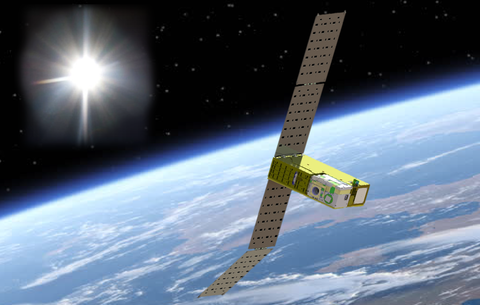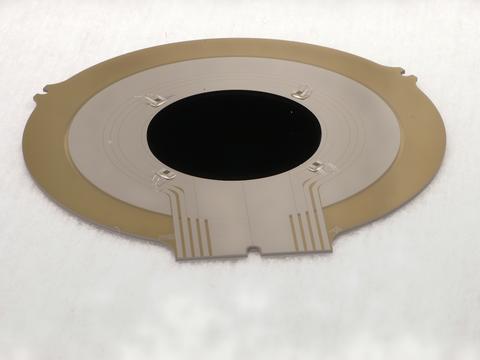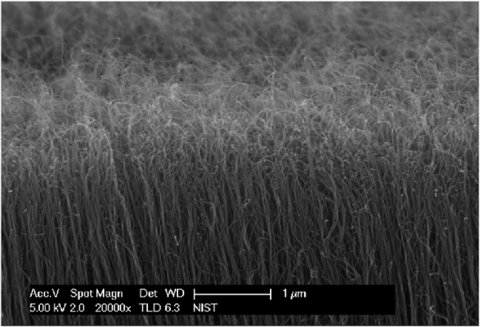Success Story: Measuring All the Energy From the Sun With Tiny NIST Detectors

No single factor is as important to Earth’s climate as the balance between the amount of energy in the sunlight that reaches the planet and the amount that is radiated back into space. The relationship between those two quantities constitutes the planet’s energy budget.
Understanding it in detail — including shifts in the balance over time, which affect climate change — requires increasingly accurate, continuous measurements of both incoming and outgoing energy flows.
NIST has made numerous contributions to that effort over the years. Now, as part of the NIST on a Chip program, it has developed the sensors for the Compact Total Irradiance Monitor (CTIM), a milestone innovation that is having a major impact on measuring total solar irradiance (TSI) — the sum of all the energy received at the top of Earth’s atmosphere.
The NIST chip detectors, which do not require calibration in space, are integrated into a NASA instrument. In July 2022, eight of these detectors were launched into orbit inside a standardized miniature satellite called a CubeSat, which is about the same volume as a shoebox. Performance so far has been excellent. Funded through the InVEST program in NASA’s Earth Science Technology Office, the CTIM was designed and built by the Laboratory for Atmospheric and Space Physics (LASP) at the University of Colorado and NIST Boulder.
TSI has been measured from space, without interruption, for more than 40 years with progressively better instruments, lately including NASA’s Total and Spectral Solar Irradiance Sensor (TSIS) operating on the International Space Station.
According to the NASA website, TSIS is 1.2 x 1.2 x 2.4 meters — about 3,500 liters in volume — and weighs 363 kilograms.
By contrast, the CTIM package is about 6 liters in volume (more than 500 times smaller), weighs around 8 kg (almost 50 times lighter), and is as accurate as comparable instruments currently being used for TSI measurements. The ease of adding sensors at these dimensions allows scientists to use them in bulk, potentially increasing the accuracy of measurements by providing redundancy.
NIST Contributions

Instruments that measure the strength of incoming radiation by the heat it produces are called bolometers. NIST researchers pioneered development of compact bolometers that employ vertically aligned ultra-black carbon nanotubes (VACNTs) as the heat-absorbing medium. Placed atop a silicon substrate, they are sensitive to light of wavelengths from 200 nanometers (near ultraviolet) to 2500 nm (infrared) and capture more than 99% of total radiation.
In the NIST version of VACNT bolometers (patented in 2016), optical energy isn’t measured directly. Instead, these devices typically use a technique called electrical substitution. A built-in heater raises the temperature of an internal thermometer a certain arbitrary level. Then a shutter opens to expose the VACNTs to sunlight. The energy in that light heats the nanotubes, and thus the thermometer, and a feedback mechanism causes the heater to back off exactly enough to keep the temperature constant. How much the heater’s power decreases indicates how much optical power from the Sun was absorbed.
A bolometer flying in a CubeSats in low Earth orbit (575 kilometers, about 360 miles, above the Earth’s surface) can measure the total irradiance of the Sun with an uncertainty of <0.01% and a stability of <0.001% per year, equivalent to the performance of the much larger TSIS.
By November 2022, after CTIM had completed more than 100 hours of direct solar exposure, David Harber — a senior researcher at LASP and principal investigator for CTIM — said that “initial analysis shows that the instrument in general, and the NIST fabricated detectors in particular, are exhibiting excellent on-orbit performance.”
NASA’s website about the device says that “CTIM’s novel Vertically Aligned Carbon Nanotube (VACNT) bolometers mark a significant milestone in the quest to develop lightweight components for CubeSat-compatible instruments.”
Technology Transfer
Getting the CTIM detectors from initial prototypes to launch involved several stages and iterations of the technology.

The idea first took shape around 2011, when various research programs began asking the collaboration to put nanotubes on their detectors. “We soon realized that we could make our own chips to our own standards,” NIST bolometer project leader John Lehman said. By 2016, the team had developed an advanced prototype.
“The thing we’ve really advanced is that we’re making full detectors,” Lehman said. “Everything is integrated into this chip. It’s a multifunctional detector that happens to have really sophisticated nanotubes on it. These are not the nanotube coatings from those early, heady days of the 1990s.”
The CTIM “was conceived, built, tested and launched within a few years, whereas TSIS took 20 years to build and launch,” said Lehman. “We consider that to be a big technical success. There are no commercial detectors that can do this.”
By the fall of 2022, Harber announced online that “the primary detectors have experienced over 100 hours of direct solar exposure since the CTIM CubeSat started taking measurements, The CTIM team is currently finalizing the analysis of the data taken so far, but initial analysis shows that the instrument in general, and the NIST fabricated detectors in particular, are exhibiting excellent on-orbit performance.”
The Future
In the near future, NIST’s detectors will be playing a crucial role in tracking Earth’s outgoing radiation in two different but related projects.
One is called Black Array of Broadband Absolute Radiometers — Earth Radiation Imager (BABAR- ERI). It is an instrument development project funded by NASA’s Earth Sciences Instrument Incubator Program. Designed to fly on CubeSats, it will measure the radiation reflected off the Earth’s atmosphere as well as that radiated by the surface. The project was completed in December of 2023.
The motivation for the project comes from the National Academies’ Decadal Survey for Earth Science and Applications from Space, which calls for broadband radiation budget measurements for detection and attribution of climate change.
One goal of the program is to develop arrays of VACNT microbolometers with electrical substitution at each pixel to provide SI-traceable infrared imaging at 2 km resolution without the need for additional onboard sources for calibration or the motorized scanning that is required of a single-pixel camera. This will allow scientists to develop much better models for how the spatial scale of clouds impacts the energy the Earth absorbs and reflects.
The other project is Libera, an instrument package that will fly on NOAA’s operational Joint Polar Satellite System-3 (JPSS-3) satellite scheduled for launch by December 2027.
Using NIST/LASP bolometers among other instruments, the Earth-facing Libera will measure total outgoing radiation daily.
"For the future,” Lehman said, “we anticipate that our bolometer designs will continue to provide accurate data for essential projects in Earth science — including those that we haven’t yet imagined.”
Contacts
-
(303) 497-3654

